Septic Tank & Cistern Installation Services Serving Edmonton, Sherwood Park, and Strathcona County, Alberta
The last thing you want to experience following a long day at work is the aftermath of a leaking or faulty cistern or septic tank. At Strathcona Excavating, we have the means to ensure that you and your family aren’t at a complete loss when your wastewater system unexpectedly fails on you.
Not only do we provide central Alberta with expert non-destructive directional drilling and hydrovac services, but we also have crews available 24/7 to solve any emergency septic tank or cistern-related issues that you may be facing.
Maintaining Your Edmonton Septic Tanks
A septic tank is an underground container purposed for the basic on-site treatment of domestic wastewater. With proper maintenance and periodic repair, septic systems can last up to 40 years. However, several factors can reduce that lifespan, and potentially leave your home or property in an enormous mess.
Cisterns are waterproof containers specially purposed to hold liquids such as potable water. While it may be tempting to leave your cistern tank and containers as they are for long periods of time, we generally recommend that you perform basic level maintenance at least once a year.
If you find that your water looks, smells, or tastes different, then we typically recommend getting your cistern tank inspected before performing more frequent maintenance.
Plastic or Concrete, Which is Better?
There are a number of factors that you should consider when deciding between a plastic or concrete septic tank. To help you determine which product will best meet your needs, we’ve provided a list of important information to consider below.
Concrete Tanks
- Very durable with a long life expectancy. Concrete septic tanks are much more durable compared to plastic alternatives, and can last as long as 40 years with proper maintenance.
- Less maintenance required. Due to the fact that concrete septic systems are so durable, they tend to require less maintenance than plastic tanks.
- Environment-resistant. Again, thanks to the durable nature of concrete tanks, they are much less likely to become compromised by environmental factors. Driving over a buried concrete septic tank will not cause it to be crushed or damaged. Similarly, changes in soil conditions or spreading tree roots will not affect the structure or functionality of the tank.
Plastic Septic Tanks
- Crushing, breaking, and rupturing. Plastic septic tanks are more susceptible to damage than their concrete counterparts. If someone drives over a buried plastic tank, it could potentially be crushed. They can also break and warp over time, and do not have as long of a lifespan.
- Maintenance requirements. Plastic septic tanks tend to require more frequent maintenance.
- Environmental damage. In contrast to concrete systems, plastic tanks can be compromised by changing soil conditions, tree roots, or vibrations.
Types of Septic Systems
Conventional Septic System
This is the most common septic system. In a conventional septic system, a large underground tank collects liquid and solid waste from your home. From there, the liquid waste, known as effluent, separates from the solid waste. The effluent is then pumped out of the tank into a septic field, where the field’s soil filters the effluent, allowing the filtered water to flow back into the earth.
Mound Septic System
A mound septic system is a popular choice for locations that have groundwater close to the surface, or where the soil depth is shallow. In this system, an artificial mound is created and serves as the septic field. Effluent is pumped into the mound where it is filtered and cleaned, just like a conventional septic field.
At-Grade Septic System
An at-grade septic system can be used where soil conditions do not support a buried septic field. In an at-grade system, similar to a mound system, drainage pipes are installed above the ground, or in shallow trenches. This allows the effluent to evaporate and filter down into the soil.
Surface Discharge Septic System
A surface discharge system, also known as open discharge, is a septic system that disperses the effluent above the ground in a designated area. In this system, the effluent is able to evaporate, and any remaining solids are then absorbed into the soil.
For more information on which septic system will best fit your needs and work best with your property, connect with us online, or by phone at 780-416-9000
SIGNS OF A SEPTIC TANK ISSUE
Signs you should watch out for include:
- Water pooling near the septic system
- Backups or slow drainage of sinks, tubs, showers and toilets
- Bad smells around your home or property
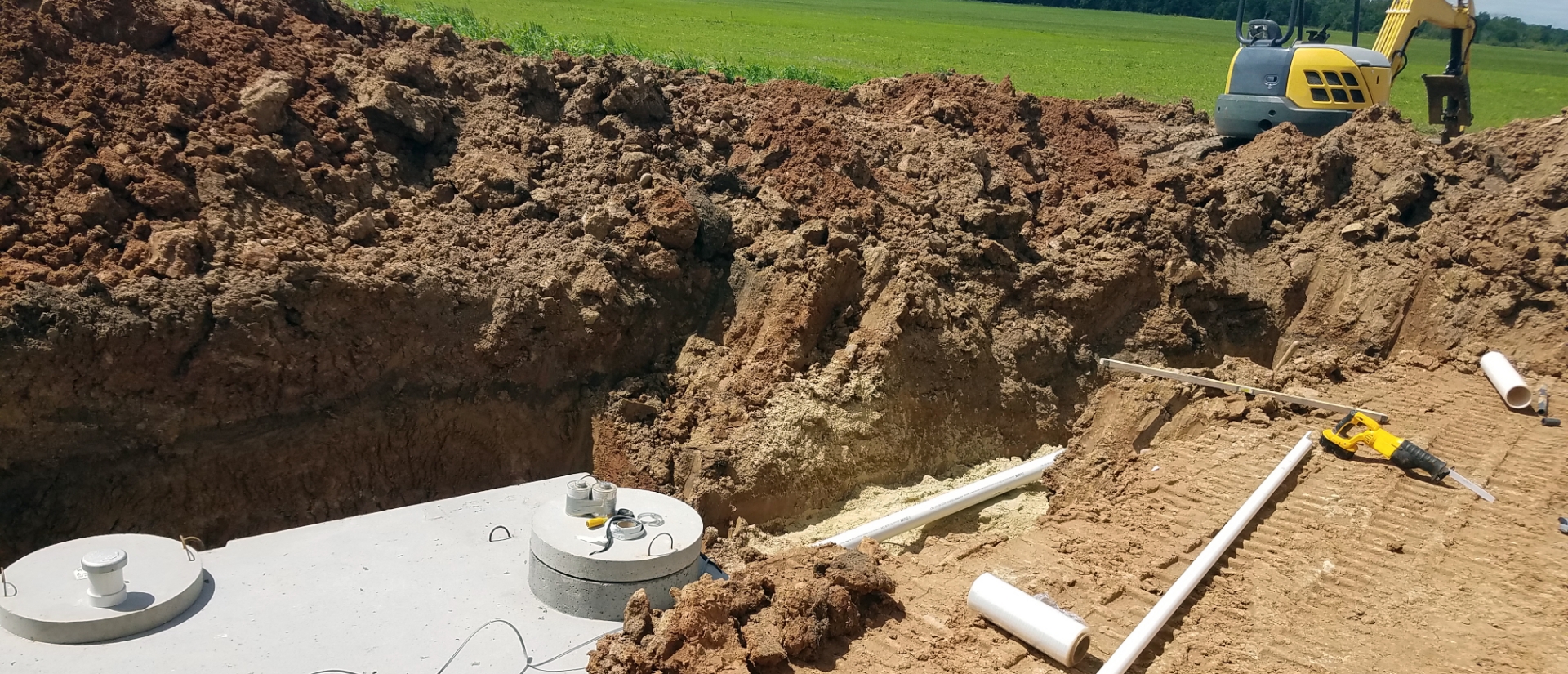
Emergency Repair Services
No matter the time, day or night, we are here to help you out of any emergency you might find yourself in when it comes to issues pertaining to your underground water or sewer systems. Our 24/7 emergency dispatch services include:
- Sewer and water line repair and replacement
- Sump pump line replacements
- Septic and cistern tank installation, repairs, and maintenance
- And more!
For more information, please give us a call at 780-416-9000.
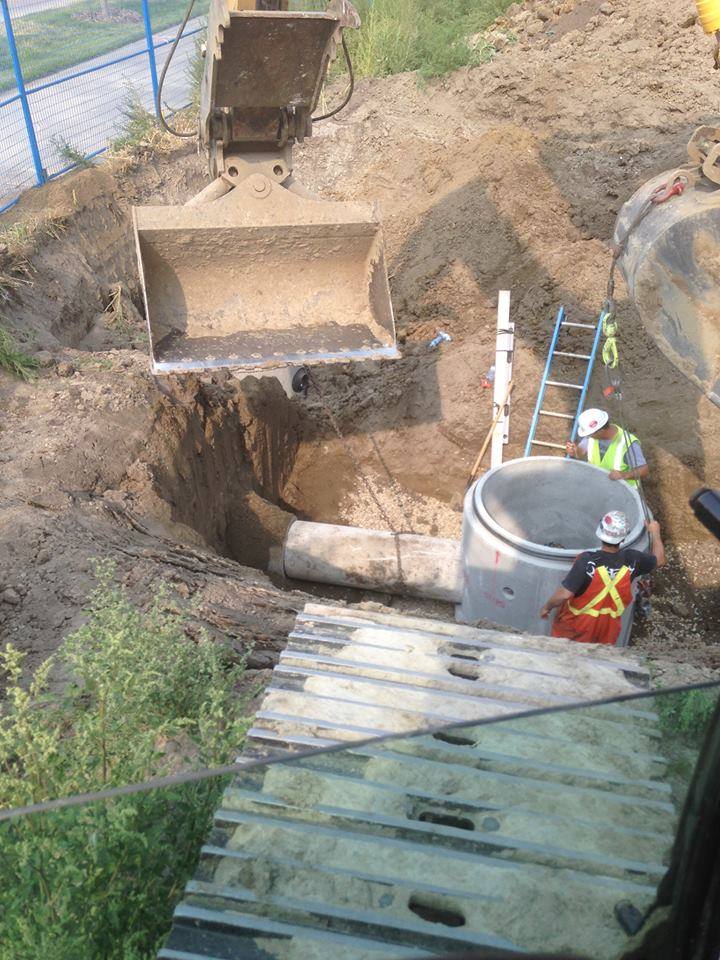
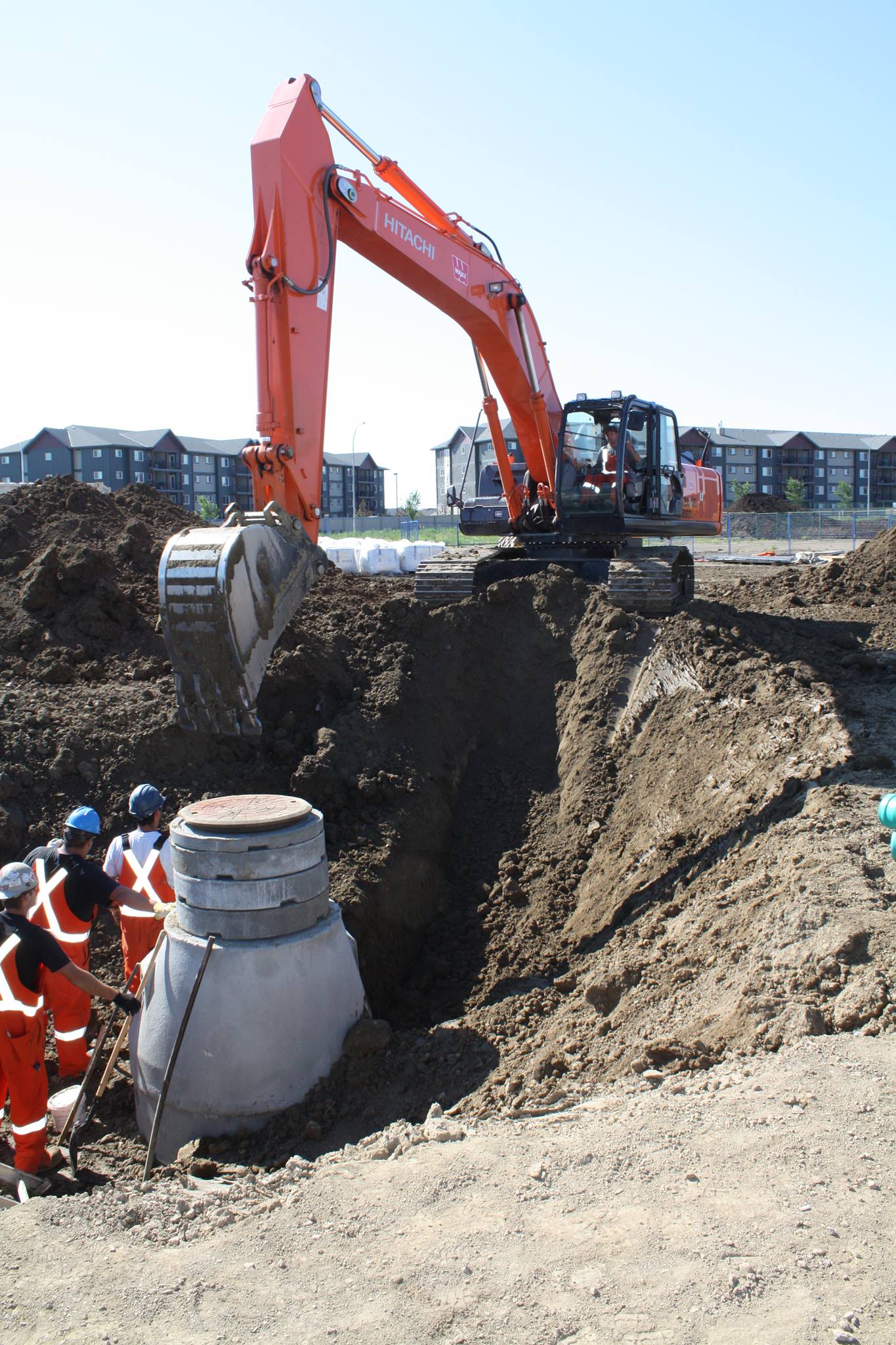
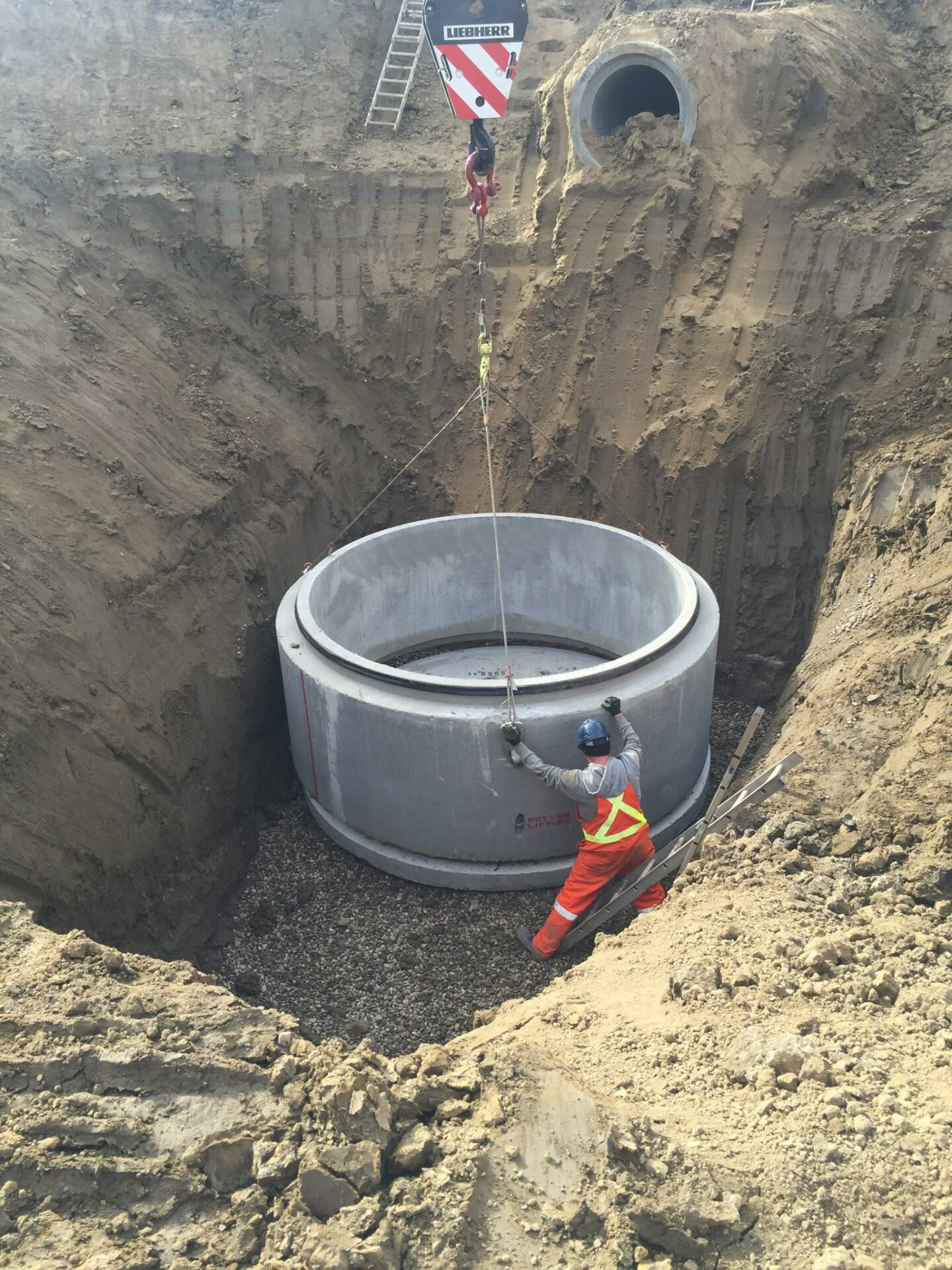
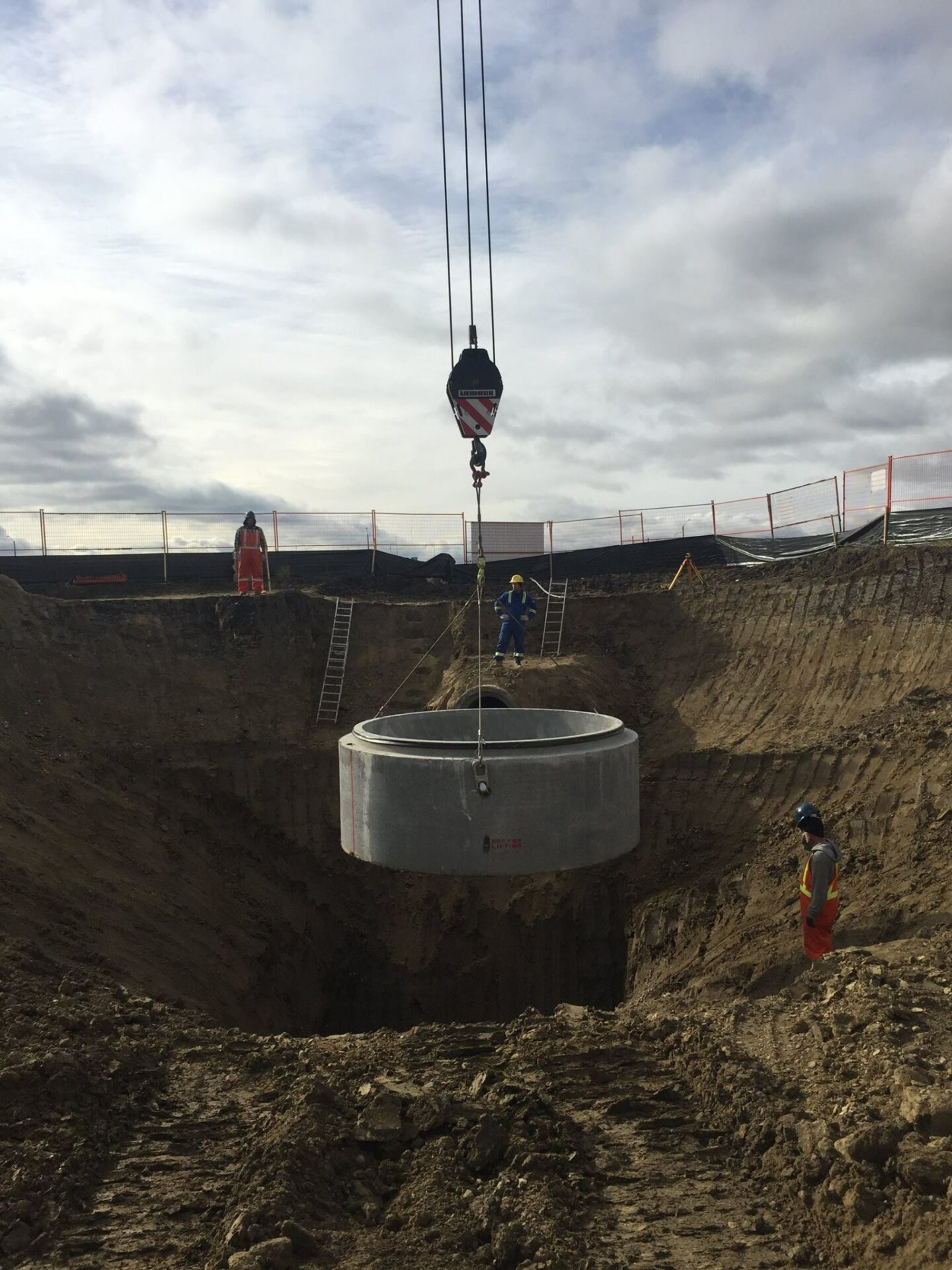
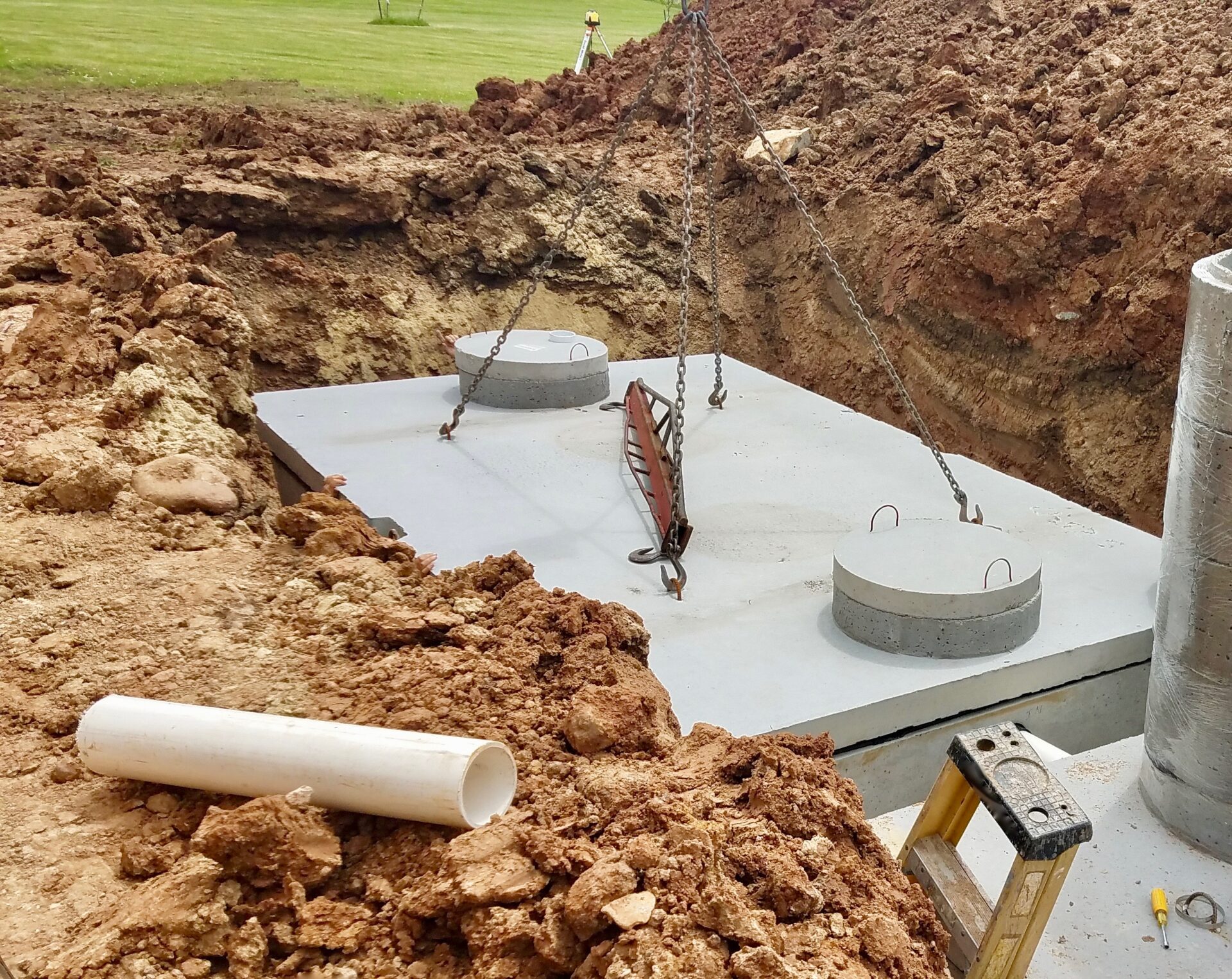
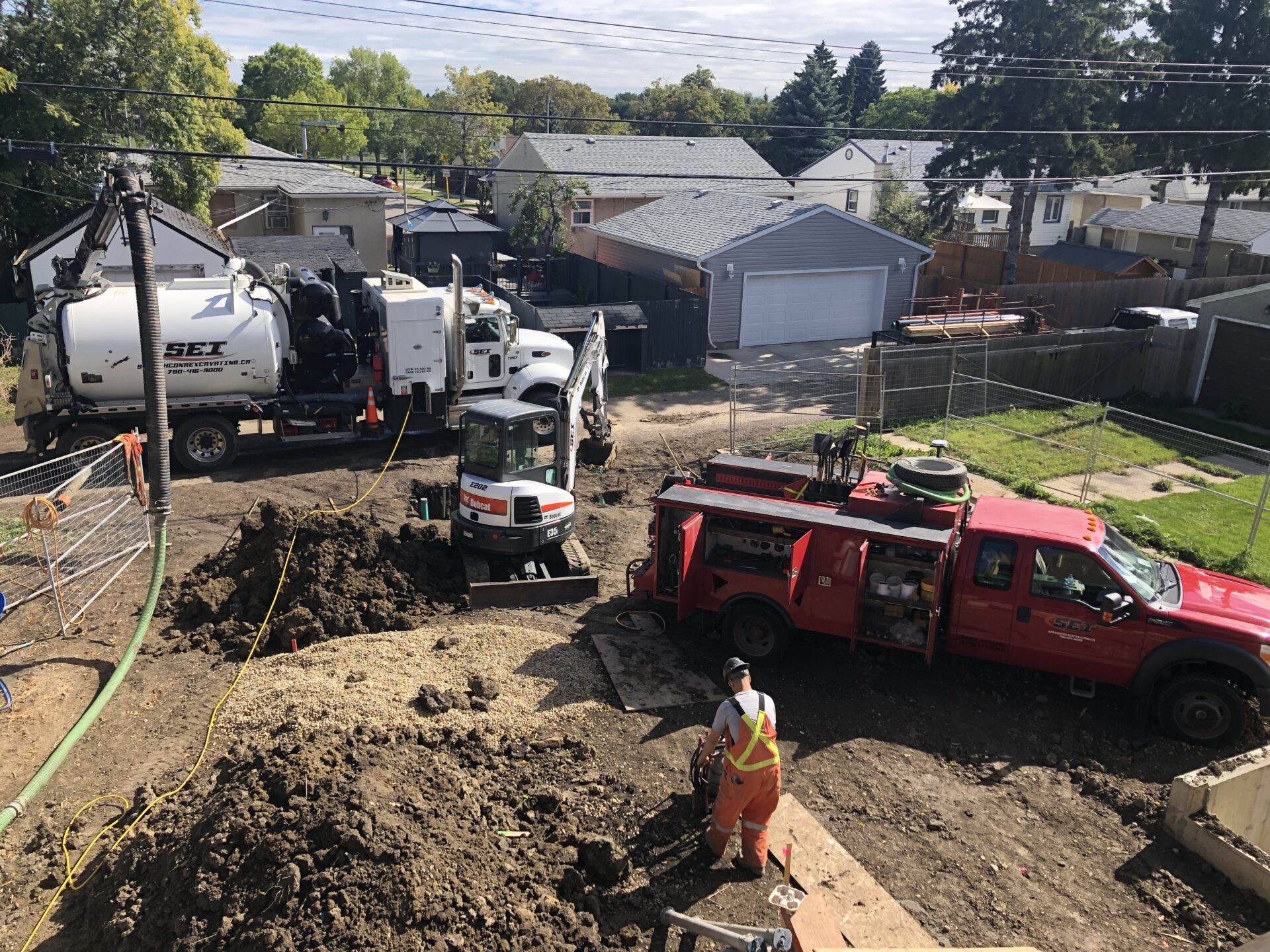
Frequently Asked Questions
There could be a variety of reasons why your septic system is not working as it should be. Some of the common reasons include but are not limited to:
• A LACK OF MAINTENANCE: Your septic system needs to be pumped at least once every three years to remove built-up scum and sludge that has settled on the bottom of your tank
• DAMAGE: There are many ways in which a sewer line can break or become damaged. Common reasons behind damage can include but are not limited to: tree roots, freezing, corrosion (common in older lines), ground disturbance, and accidental damage from construction
• IMPROPER INSTALLATION
Strathcona Excavating can offer a quick, affordable solution regardless of the circumstances.
Depending on the materials used and how it’s been maintained through the years, a septic system can last anywhere between 15 to 40 years.
When considering the installation or replacement of your cistern tank, it is important that you consider the following:
• The number of people living in your home
• The daily amount of water used for showers, toilets, dishwashing, laundry, lawn water, faucet, etc
• And more
For more information about our cistern installation or replacement services in Edmonton, Sherwood Park, and Strathcona County, be sure to give us a call!
To ensure the water inside is kept cool and the contents protected from freezing during the icy cold Alberta wintertime, underground cisterns are typically buried at a minimum depth of four feet below the surface of the ground.
A septic tank is designed to treat and dispose of wastewater from residential or commercial properties that are not connected to a municipal sewage treatment system. It provides a means of separating solid waste from the liquid effluent, allowing the effluent to be further treated and released into the surrounding soil.
At its most basic level, a septic tank collects the wastewater from your home in a large underground holding tank. Within this tank, the solid waste collects at the bottom of the tank, with the liquid waste (effluent) collecting above the solid waste. Once separated, the septic system will pump the effluent into a septic field where the effluent is filtered and absorbed by the field’s soil.
A septic field, also known as a leaching or draining field, is the final treatment stage for the effluent from a septic tank. Effluent is pumped from the septic tank into the field by a permeable pipe, allowing the effluent to be dispersed into the soil. The field’s soil acts as a biological filter, removing dangerous components before the filtered wastewater reaches the ground or surface water.
Most septic tanks in Alberta will need to be emptied every 3 to 5 years. However, your tank might need to be emptied before 3 years, or after 5 years, depending on your system’s specific usage. Factors such as the size of your system’s tank, and how much waste is produced by your home on a daily, monthly, or yearly basis will determine how often your tank should be emptied.
For more information on pumping your septic tank, connect with us online, or by phone at 780-416-9000.
Proper maintenance is the key to ensuring a long-lasting and fully functioning septic tank and system.
We’ve compiled a list of tips to help you keep your septic system in good working order:
Regular Cleaning: Ensure your tank is regularly pumped based on the needs of your specific septic system.
Water Conservation: Conserving water is a great step you can take to ensure your septic system is not overwhelmed by wastewater.
Proper Waste Disposal: Avoid blocking your septic system by only flushing human waste and toilet paper.
Use Septic-Safe Products: Try to use only septic-safe products and chemicals, such as septic-safe laundry detergent and cleaning chemicals. This will help limit the effects of harsh chemicals in your tank.
Other Services
- Our Office
- Service Regions

